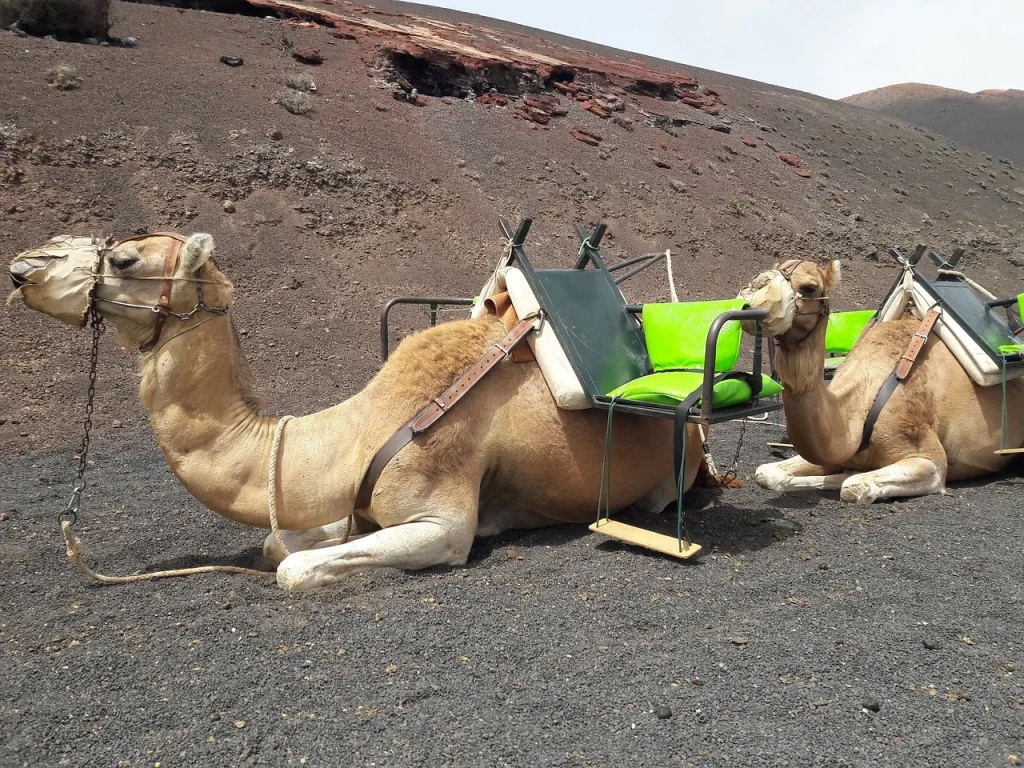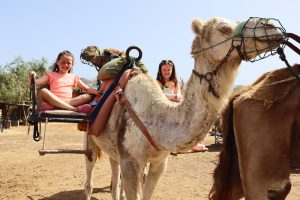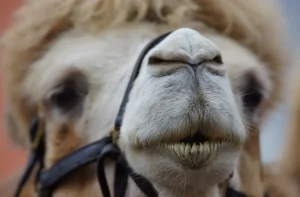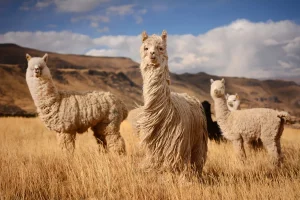From La Graciosa to El Hierro, the Canary Island camel has been present on all the islands of the archipelago for the past few centuries.
What is the Origin of the Canary Island Camel?
The origin of the Canary Island camel dates back to the time of European colonization. The camel (Camelus dromedarius) arrived in the archipelago in 1405, brought from expeditions on the African continent. The camels’ excellent adaptation to these islands led to their expansion across the entire archipelago, although their presence was greatest in the southern areas of Gran Canaria and Tenerife, as well as on the islands of Fuerteventura and Lanzarote.
How Did the Camel Arrive in the Canary Islands?
The Canary Island camel, known locally as the “island countryside tractor,” is said to have arrived floating or towed, following the conquest of the islands of Lanzarote and Fuerteventura. This is because in the early 15th century, expeditions to Barbary began, which resulted in the capture of dromedaries. The instability of the small vessels used for the voyages and the relatively short distance from the Saharan coast meant that the animals had to be transported by towing.
As they spread across the archipelago in later years, their physique adapted to their new role as work animals in the island’s countryside. For nearly 40 years, the population has remained isolated and unmixed, as the importation of African dromedaries is prohibited for sanitary reasons.
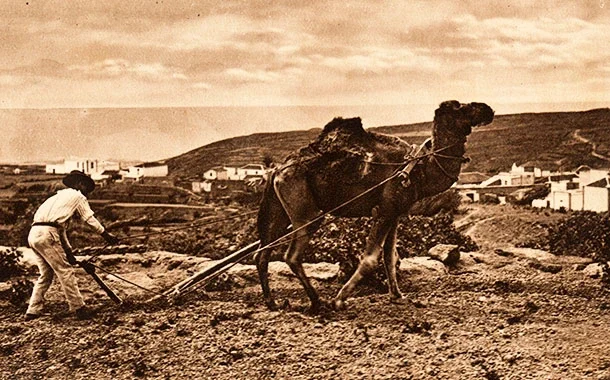
The Role of the Canary Island Camel
Camels were primarily used for the transport of people and goods and for a multitude of agricultural tasks, helping to shape a unique agricultural landscape that is now known worldwide. Historically, they served as pack animals, transporting all kinds of goods over short and long distances.
Today, their dairy production is gaining relevance, as camel milk is a product with high nutritional value and is rich in insulin.
Farmers and camel drivers on Lanzarote and Fuerteventura distinguished between two types of camels based on their form:
- Moro – The one that came directly from Africa, with long limbs and a light build.
- Tacho – The “land camel,” which was a stronger, more bony animal with shorter limbs. They also had broader chests and were more compact, which is why they were called tachos.
Working on slopes is how they developed their unique characteristics: a more developed chest, strong musculature, and a shorter height.
Current Population
Due to the decline of farm work and new, more mechanized processes, the camels were on the verge of extinction in the Canary Islands during the first half of the 20th century, but thanks to tourism, everything changed. Today, all camel operations in the Canary Islands are for tourism.
